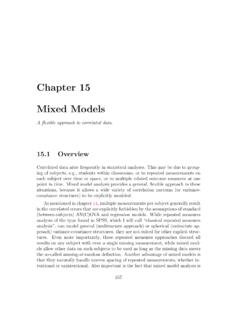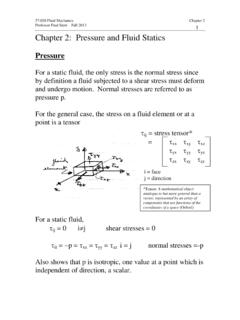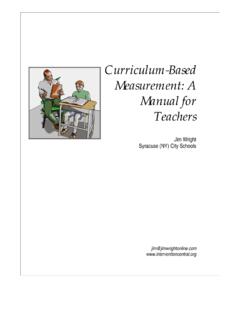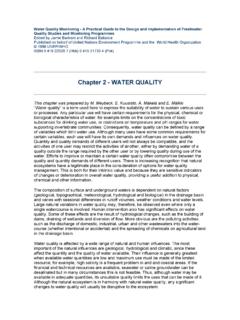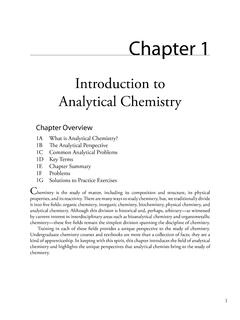Transcription of A Roadmap to Fair Value Measurements and Disclosures ...
1 A Roadmap to fair Value Measurements and Disclosures (Including the fair Value Option). September 2020. The FASB Accounting Standards Codification material is copyrighted by the Financial Accounting Foundation, 401 Merritt 7, PO Box 5116, Norwalk, CT. 06856-5116, and is reproduced with permission. This publication contains general information only and Deloitte is not, by means of this publication, rendering accounting, business, financial, investment, legal, tax, or other professional advice or services. This publication is not a substitute for such professional advice or services, nor should it be used as a basis for any decision or action that may affect your business.
2 Before making any decision or taking any action that may affect your business, you should consult a qualified professional advisor. Deloitte shall not be responsible for any loss sustained by any person who relies on this publication. The services described herein are illustrative in nature and are intended to demonstrate our experience and capabilities in these areas; however, due to independence restrictions that may apply to audit clients (including affiliates) of Deloitte & Touche LLP, we may be unable to provide certain services based on individual facts and circumstances.
3 As used in this document, Deloitte means Deloitte & Touche LLP, Deloitte Consulting LLP, Deloitte Tax LLP, and Deloitte Financial Advisory Services LLP, which are separate subsidiaries of Deloitte LLP. Please see for a detailed description of our legal structure. Copyright 2020 Deloitte Development LLC. All rights reserved.. Publications in Deloitte's Roadmap Series Business Combinations Business Combinations SEC Reporting Considerations Carve-Out Transactions Comparing IFRS Standards and GAAP. Consolidation Identifying a Controlling Financial Interest Contingencies and Loss Recoveries Contracts on an Entity's Own Equity Convertible Debt Current Expected Credit Losses Disposals of Long-Lived Assets and Discontinued Operations Distinguishing Liabilities From Equity Earnings per Share Environmental Obligations and Asset Retirement Obligations Equity Method Investments and Joint Ventures Equity Method Investees SEC Reporting Considerations fair Value Measurements and Disclosures Foreign Currency Transactions and Translations Income Taxes Initial Public
4 Offerings Leases Noncontrolling Interests Non-GAAP Financial Measures Revenue Recognition SEC Comment Letter Considerations, Including Industry Insights Segment Reporting Share-Based Payment Awards Statement of Cash Flows iii Acknowledgments The content in this Roadmap reflects the thoughts, contributions, and accumulated experience of Deloitte's National Office, as well as the input from the many auditors and advisers in the Deloitte network who, since the original issuances of FASB Statements 157 and 159, have helped develop the comprehensive views and interpretations in this publication.
5 Ashley Carpenter oversaw the development of this publication and wishes to extend his deepest appreciation to Marla Lewis, Michael Scheper, and Chase Hodges for their hard work and contributions. He would also like to thank Teri Asarito, Sandy Cluzet, Dave Frangione, Jeanine Pagliaro, and Joseph Renouf for delivering the first-class editorial and production effort that we have come to rely on. iv Contents Preface xv Contacts xvi chapter 1 Background 1. Introduction 1. Objective of a fair Value measurement 1. Exit Price 2. History of fair Value Requirements 3. chapter 2 Scope 7.
6 Scope and Scope Exceptions 7. General 7. measurement 8. Disclosure 30. Practicability Exceptions 31. General 31. Certain Entities That Calculate NAV per Share (or Its Equivalent) 32. Mid-Market and Other Pricing Conventions 34. Simplified Hedge Accounting Approach 34. Application of ASC 820 to Specific Assets, Liabilities, and Equity Instruments 34. Notes Receivable and Notes Payable 34. measurement 34. Disclosure 35. Certain Financial Instruments 35. measurement 35. Disclosure 36. Collateralized Financing Entities 39. measurement 39. Disclosure 39. Guarantees 39.
7 measurement 39. Disclosure 40. v Deloitte | A Roadmap to fair Value Measurements and Disclosures (Including the fair Value Option) (2020). Share-Based Payments 40. measurement 40. Disclosure 40. Assets Acquired and Liabilities Assumed in a Business Combination 41. measurement 41. Disclosure 42. Impairment Testing of Long-Lived Assets 42. measurement 42. Disclosure 43. Leases 43. measurement 43. Disclosure 44. Asset Retirement Obligations 45. measurement 45. Disclosure 45. Life Insurance Contracts 46. measurement 46. Disclosure 46. Hedged Item in a fair Value Hedge 47.
8 measurement 47. Disclosure 47. Nonmonetary Transactions 47. measurement 47. Disclosure 48. Exit or Disposal Cost Obligations 48. measurement 48. Disclosure 48. Noncash Consideration in a Revenue Contract 48. measurement 48. Disclosure 49. Defined Benefit Pension and Other Postretirement Plans in the Sponsor's Financial Statements 49. measurement 49. Disclosure 50. Financial Statements of Defined Benefit Plans, Defined Contribution Plans, and Health and Welfare Plans 50. measurement 50. Disclosure 50. Deferred Compensation Obligations in Rabbi Trusts 51. measurement 51.
9 Disclosure 52. vi Contents Contributions 52. measurement 52. Disclosure 53. chapter 3 Application Framework 54. Introduction 54. fair Value Application Framework 54. Step-by-Step Application Framework 54. Step 1 Identify the Unit of Account 55. Liabilities With Third-Party Credit Enhancements 56. Step 2 Identify the Unit of Valuation 56. Financial Assets, Nonfinancial Derivative Assets, Liabilities, and Equity Instruments 56. Nonfinancial Assets Other Than Nonfinancial Derivative Assets 57. Step 3 Identify the Principal or Most Advantageous Market 58. Step 4 Develop Assumptions That Market Participants Would Use to Measure fair Value 58.
10 Step 5 Measure fair Value on the Basis of Available Inputs and Appropriate Valuation Techniques 59. Step 6 Allocate fair Value measurement to Individual Units of Account (if Necessary) 61. Step 7 Classify the fair Value measurement Under the fair Value Hierarchy and Prepare Disclosures 61. chapter 4 Unit of Account 62. Introduction 62. Unit of Account Prescribed by ASC 820 64. Allocation to Multiple Units of Account 65. General 65. Financial Assets, Nonfinancial Derivative Assets, Liabilities, and Equity Instruments 65. Portfolio Valuation Exception for Certain Groups of Assets and Liabilities With Offsetting Risk Positions 66.












